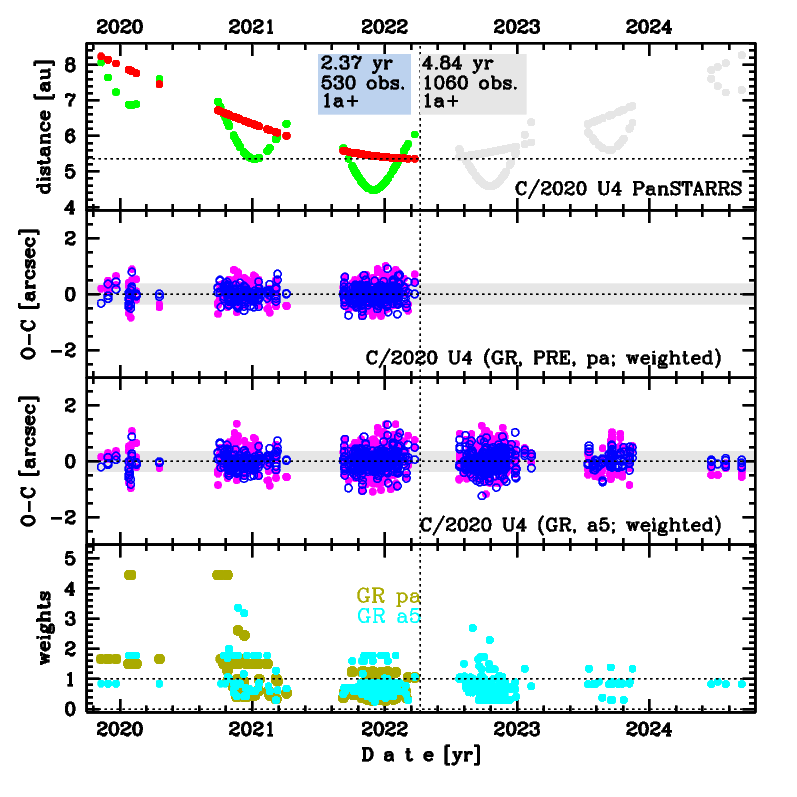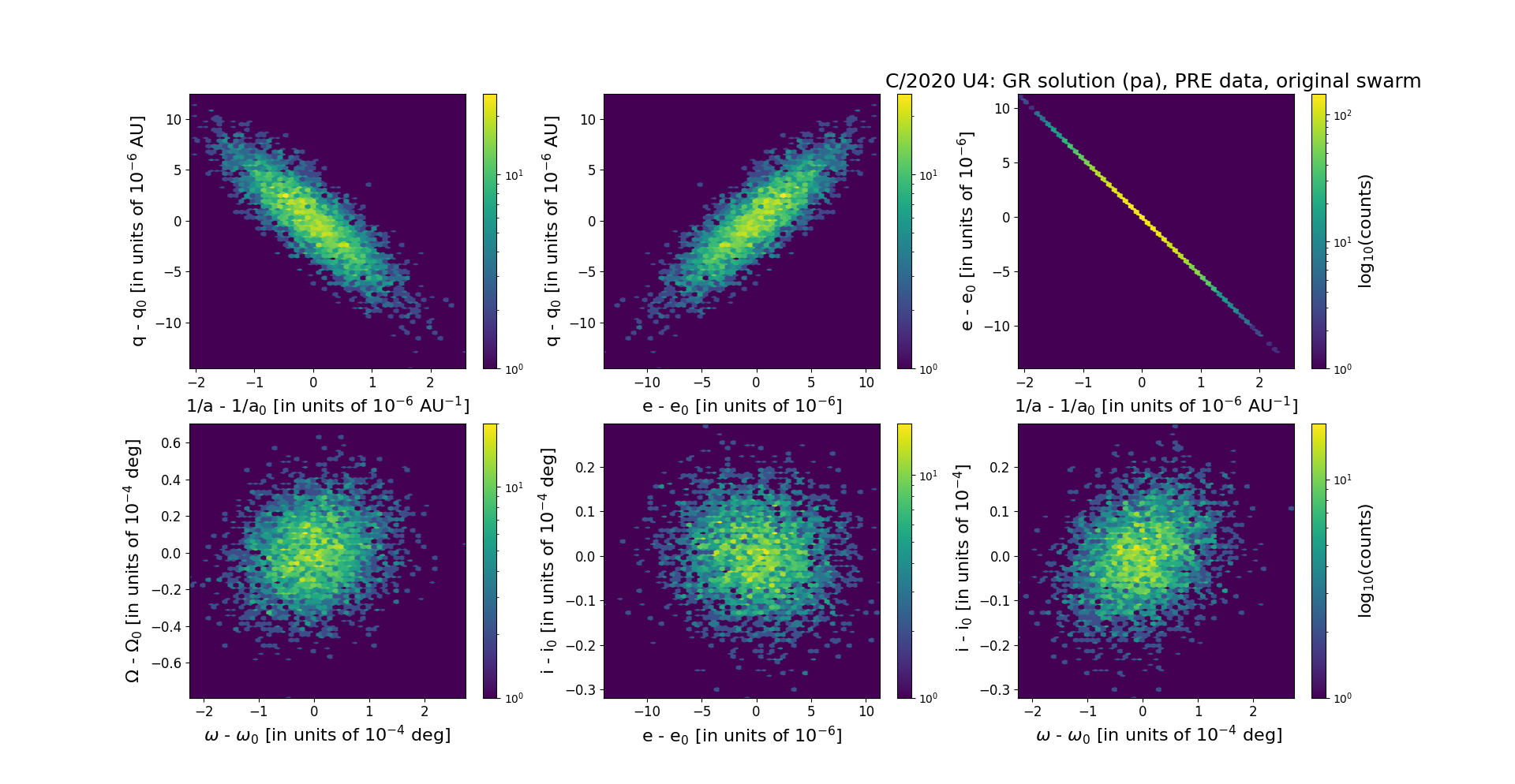C/2020 U4 PanSTARRS
more info
Comet C/2020 U4 was discovered on 22 October 2020, about 1.5 yr before its perihelion passage; later a series of prediscovery images was found going back to 9 November 2019. This comet was observed until 11 September 2024 (as in February 2025).
Comet had its closest approach to the Earth on 30 November 2021 (4.47 au); a bit more than four months before the perihelion passage.
Solution given here is based on data span over 4.84 yr in a range of heliocentric distances: 8.24 au – 5.35 au (perihelion) – 8.26 au. Orbits based on pre-perihelion and post-perihelion data independently were also obtained.
This Oort spike comet suffers small planetary perturbations during its passage through the planetary system; however, they lead to escape the comet from the solar system on hyperbolic barycentric orbit.
Comet had its closest approach to the Earth on 30 November 2021 (4.47 au); a bit more than four months before the perihelion passage.
Solution given here is based on data span over 4.84 yr in a range of heliocentric distances: 8.24 au – 5.35 au (perihelion) – 8.26 au. Orbits based on pre-perihelion and post-perihelion data independently were also obtained.
This Oort spike comet suffers small planetary perturbations during its passage through the planetary system; however, they lead to escape the comet from the solar system on hyperbolic barycentric orbit.
| solution description | ||
|---|---|---|
| number of observations | 530 | |
| data interval | 2019 11 09 – 2022 03 24 | |
| data arc selection | data generally limited to pre-perihelion (PRE) | |
| range of heliocentric distances | 8.24 au – 5.35au | |
| detectability of NG effects in the comet's motion | NG effects not determinable | |
| type of model of motion | GR - gravitational orbit | |
| data weighting | YES | |
| number of residuals | 1035 | |
| RMS [arcseconds] | 0.30 | |
| orbit quality class | 1a+ | |
| orbital elements (barycentric ecliptic J2000) | ||
|---|---|---|
| Epoch | 1716 04 15 | |
| perihelion date | 2022 04 10.67004391 | ± 0.00057909 |
| perihelion distance [au] | 5.35310363 | ± 0.00000351 |
| eccentricity | 0.99986933 | ± 0.00000359 |
| argument of perihelion [°] | 69.660952 | ± 0.000064 |
| ascending node [°] | 119.997387 | ± 0.000018 |
| inclination [°] | 167.023713 | ± 0.000008 |
| reciprocal semi-major axis [10-6 au-1] | 24.41 | ± 0.67 |
| file containing 5001 VCs swarm |
|---|
| 2020u4pa.bmi |

Upper panel: Time distribution of positional observations with corresponding heliocentric (red curve) and geocentric (green curve) distance at which they were taken. The horizontal dotted line shows the perihelion distance for a given comet whereas vertical dotted line — the moment of perihelion passage.
Middle panel(s): O-C diagram for a given solution (sometimes in comparison to another solution available in CODE), where residuals in right ascension are shown using magenta dots and in declination by blue open circles.
Lowest panel: Relative weights for a given data set(s).
Middle panel(s): O-C diagram for a given solution (sometimes in comparison to another solution available in CODE), where residuals in right ascension are shown using magenta dots and in declination by blue open circles.
Lowest panel: Relative weights for a given data set(s).
